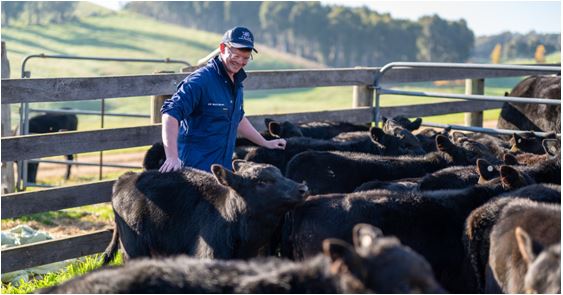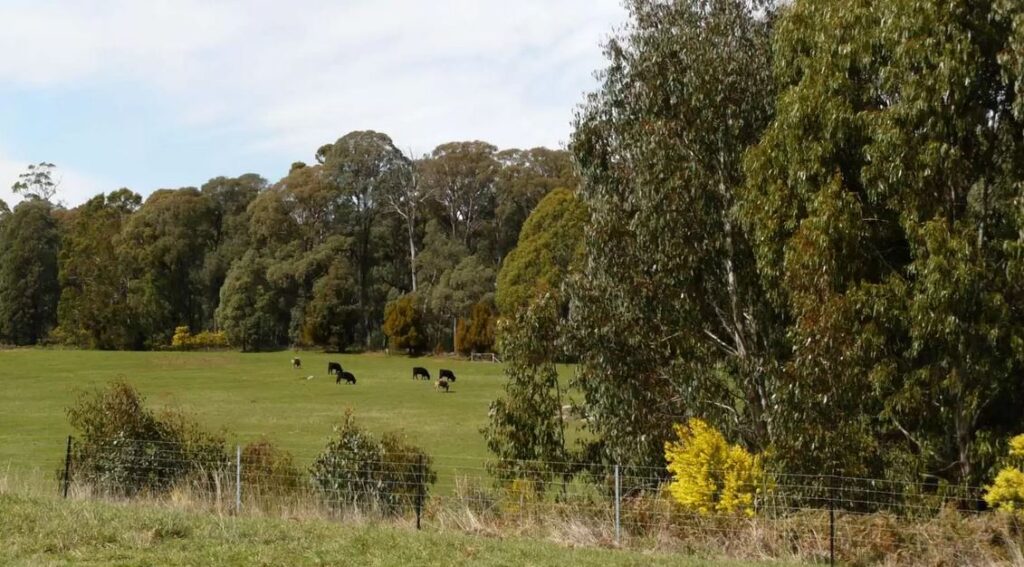May 20th, 2024When an animal disease emergency happens…

When Dr Matt Boon from Prime Livestock Veterinary Services put his hand up to work on emergency animal disease outbreaks, he did it with the bigger picture in mind.
“As advocates for the Australian livestock industry, livestock vets like me have a moral obligation to step up and give a hand,” he said.
Matt operates a mobile livestock service in the north-east and signed up to join Agriculture Victoria’s Emergency Veterinary Response Team last year.
In February, Matt was deployed to support an emergency anthrax response and worked alongside a team of animal health and welfare staff to vaccinate livestock for anthrax in the Shepparton region.
“I came away from the experience with a deeper insight into what goes into an emergency disease response and the challenges that come with managing an outbreak.
“It was very different work to what private vets are usually doing day-to-day on farms. It was rewarding to work alongside government vets and to better understand the role they play for the industry,” Matt said.
To respond to the challenges of future emergency animal disease outbreaks, Agriculture Victoria believes we need more private vets like Matt to be part of the puzzle.
“I’d encourage other private vets out there to get involved! If you can spare the time, there’s nothing to lose and so much to gain. I’m certainly glad I put my hand up to be involved,” Matt said.
Casual employment is now available as an emergency response veterinary officer and veterinary businesses can sign up via service level agreements.
Agriculture Victoria is currently promoting signing on as a chance for private sector vets to share their expertise, learn new skills and help protect our agricultural sector and communities.
Image: Agriculture Victoria
February 27th, 2024Warning to prevent heat stress in livestock

Agriculture Victoria is urging livestock owners to ensure all animals in their care are adequately protected from harsh weather conditions, including extreme heat.
Providing access to shelter can improve animal welfare by reducing the risk of heat stress and production losses as the animal doesn’t have to actively use energy to lower its body temperature.
Agriculture Victoria Animal Health Officer Flick Searle said behavioural signs of heat stress in livestock can include increased respiration rate, panting, increased salivation, listlessness, and lethargy.
“Heat stress can be treated by moving affected livestock into shade and providing clean, cool water. If after a period of time, after providing this treatment the animal doesn’t improve contact a veterinarian immediately or humanely euthanise the animal,” Ms Searle said.
“In high temperatures, the accessible shelter needs to give protection from the sun, reducing solar radiation and also allow air movement.

“Good examples include trees with large canopies, shade cloth structures and sheds with open sides,” she said.
“Farmers need to keep in mind that some livestock have a higher need for shelter, such as very young, old or sick livestock as their ability to regulate their temperature is reduced. Therefore it’s your responsibility to provide care accordingly.”
Ms Searle said when temperatures are high livestock can tend to crowd shelter areas so it’s vital to have sufficient shelter for all livestock present.
“If the shelter is overcrowded, it can have the opposite effect and lead to livestock bunching up and transferring more heat to one another or even result in smothering.
“The most important things you can do for your animals in hot weather is to provide them with shade, water and rest during the hottest parts of the day.”








